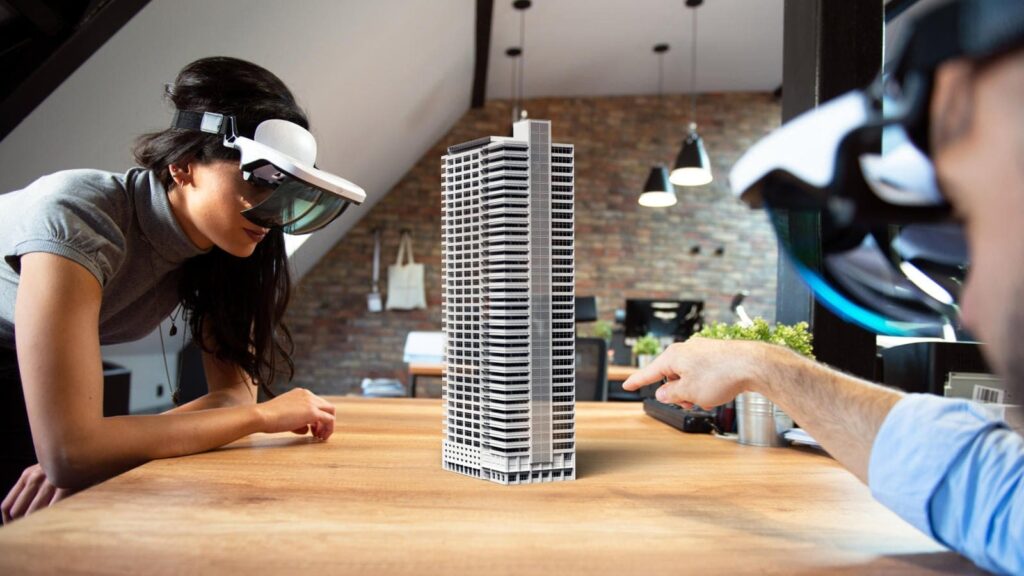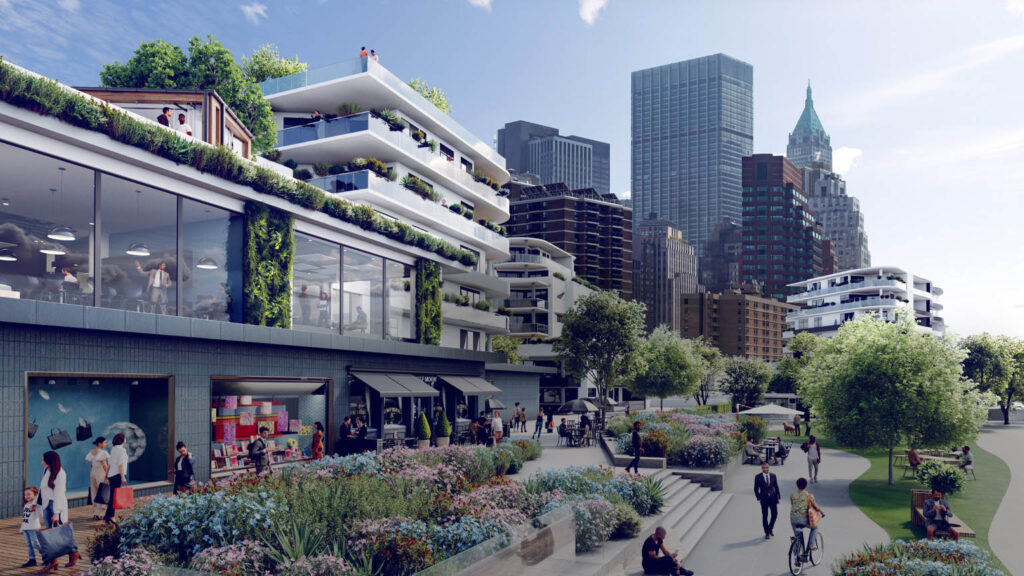Benefits of Virtual Reality in Property Tours & Design and the Future Impact on Real Estate

Virtual Reality (VR) technology has emerged as a transformative tool in the real estate industry, offering a myriad of benefits for property tours and design. The immersive nature of VR enables potential buyers and tenants to experience properties remotely, providing a realistic and interactive tour without the need for physical presence. This not only saves time and resources but also enhances the overall viewing experience. One significant advantage of using VR for property tours is the ability to showcase a property’s unique features in a dynamic and engaging manner. Prospective clients can virtually walk through each room, examine details, and get a realistic sense of the space. This fosters a deeper connection between the potential buyer and the property, ultimately influencing their purchasing decisions. Furthermore, VR facilitates the design process by allowing architects, designers, and homeowners to visualize and modify spaces in a virtual environment. This not only streamlines the design phase but also reduces the likelihood of costly mistakes in the actual construction. Design changes can be implemented and assessed in real time, providing a collaborative and efficient platform for all stakeholders involved. Looking ahead, the future of virtual reality in the real estate market holds immense potential and is poised to revolutionize the industry. As technology continues to advance, VR applications are becoming more accessible, cost-effective, and user-friendly. This opens up new possibilities for widespread adoption, making VR an integral part of the real estate experience. The impact of VR on the real estate market extends beyond property tours and design. Virtual reality has the potential to redefine how properties are marketed, creating innovative and immersive marketing campaigns. Additionally, VR can be utilized for remote property management, allowing real estate professionals to efficiently oversee and address issues without being physically present. In conclusion, the benefits of using VR for property tours and design are evident in the enhanced user experience, streamlined processes, and cost savings. The future of virtual reality in the real estate market holds promise for widespread integration, reshaping the industry and providing new avenues for growth and innovation. As technology continues to evolve, embracing VR in real estate practices will become increasingly vital for staying competitive and meeting the evolving needs of clients and stakeholders alike.
The Rise of Shared Housing in 2024: Co-living, Micro-apartments, and the Future of Real Estate

Introduction: In 2024, the concept of shared housing has taken the real estate industry by storm. With the increasing demand for affordable living spaces and the need for flexibility, co-living and micro-apartments have become the go-to options for many. This blog will explore the rise of shared housing in 2024, its various forms, and the future of real estate. Co-living: Co-living spaces have become increasingly popular in 2024, offering a community-driven environment where individuals can share common areas such as kitchens, living rooms, and even outdoor spaces. These spaces cater to a diverse range of individuals, from young professionals to students, and often come with amenities like gyms, pools, and even game rooms. Co-living communities have also embraced technology, with smart home systems that allow residents to control their living spaces through their smartphones. Co-living spaces have become increasingly popular in 2024, offering a community-driven environment where individuals can share common areas such as kitchens, living rooms, and even outdoor spaces. Micro-apartments: Micro-apartments, or “micros,” have also gained traction in 2024, offering a more compact and affordable option for those looking to live independently but with a sense of community. These apartments typically range from 200 to 400 square feet and are designed to be efficient and practical, with built-in storage, compact kitchens, and small balconies or patios. Micro-apartments have also become popular for their eco-friendly design, with many incorporating green roofs, solar panels, and energy-efficient appliances. The Future of Real Estate: As shared housing continues to grow in popularity, the real estate industry is adapting to meet the demands of this new market. This includes the development of purpose-built shared housing communities, as well as the refurbishment of existing properties to cater to the needs of co-living and micro-apartment residents. As technology continues to advance, we can expect to see even more innovative solutions being developed for shared housing, such as virtual reality tours and AI-driven rental management systems. Conclusion: The rise of shared housing in 2024 has revolutionized the way we think about living spaces and the real estate industry. With options like co-living and micro-apartments catering to diverse needs and budgets, it’s clear that the future of real estate is all about flexibility, community, and sustainability. As technology continues to advance, we can expect even more innovative solutions to be developed for shared housing, shaping the way we live for years to come.


